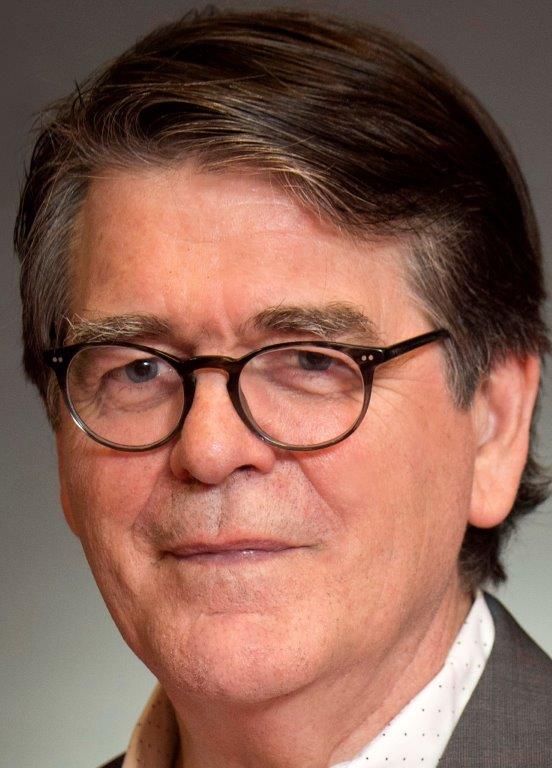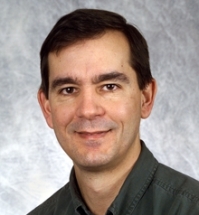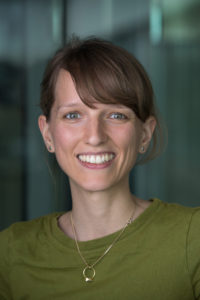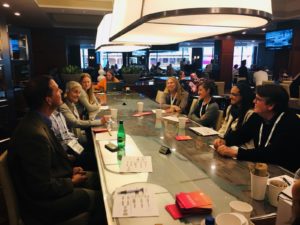Creating a Path Forward for Implementation Science in Nutrition: An interview with Gilles Bergeron
Gilles Bergeron has worked in international food security and nutrition for more than 25 years. In December 2020, he retired from his academic position as Senior Vice President of the New York Academy of Sciences, and at the same time announced that he would be stepping down from the SISN Board. Our entirely voluntary Board of international implementation experts provide leadership, strategic guidance and collective support to advance the development of implementation science (IS) in nutrition, and as a founding member, Gilles has dedicated over 5 years of service to advancing our mission.
“SISN and its Board seeks to have members that come from the nutrition practice world and the nutrition research world. Gilles brought these two worlds together within a single person and was able to move deftly between them in Board discussions. One minute he would persuasively argue a point as a practitioner and the next minute argue the same point as a researcher, in the process helping the entire Board see the best path forward. SISN owes an enormous debt of gratitude to Gilles and he will be sorely missed on the Board.” says David Pelletier, SISN Past President.
While we hope Gilles will remain actively engaged with SISN for many years to come, we wanted to take this time of transition to acknowledge his contribution, and ask him to share with us his key learnings. Here, Gilles tells us why he sought to be involved with SISN, his greatest accomplishments as a Board Member, and his reflections on the past, present, and future of IS in nutrition.
1. You are one of the founding members of SISN, what was it about the Society and its mission that made you want to be involved from the beginning?
Much of my professional life was spent implementing nutrition interventions. Globally, vast amounts of resources are deployed each year in this, yet the need for structured training in the design and delivery of nutrition interventions was rarely appreciated. I often talked about this with academic and NGO colleagues: How can we improve the quality of field activities? What works and what doesn’t? Where can we learn about it? The time was due for “implementation” to be acknowledged as a space of formal knowledge in nutrition so when the idea surfaced of creating a scientific society around this, and Sight and Life offered the resources to get it started, we all happily joined in. The meeting in Castel Gandolfo that gave birth to SISN gave us a collective voice and a mechanism to exchange about the myriad facets of implementation science. It was a very powerful moment and it cemented our collective enthusiasm for it.
2. If you had to describe SISN to somebody who knows nothing about the Society, what would you say?
Let me give you the “elevator speech” version: SISN is about the “how”, rather than the “what”. And the “how” is not just about the logistics of implementation. It is also about: doing decent M&E; exploring alternate ways of doing things in a systematic way; making sure we understand local needs and dynamics. This is where SISN is making a difference. It brings the tools, methods, ideas and evidence to do those things, and it puts the people who do those things in touch with one another.
3. As you reflect on your time as a SISN Board Member what do you consider the greatest accomplishment(s) or highlight(s) of the two terms?
The first achievement was the quality of people that the Society initially brought together: we had an extraordinarily diverse representation from nutrition: epidemiologists; biochemists; community and clinical nutritionists, policy actors, anthropologists, implementers, all of whom, stars in their own fields. So their reunion lent immediate credibility and networks to the group. That good start was consolidated as SISN articulated, in a thought piece published in 2018, a clear definition of its purpose, mandate, audience, and where contributions were most needed. I’m not saying that getting there was easy: it got quite heated at times! But in the end, the Founding Members and the Board succeeded in building a ship that could sail—and now it is.
4. Over the 5 years that you have been involved with SISN, how have you seen people’s understanding of and attitudes towards implementation science change?
Yes, change is happening but this is slow and incremental. Inertia is certainly a factor but also, many groups need to be brought along before the broader vision can materialize: academics need to be shown how the realities of implementation, if left unaddressed, may deny the best work of science. Implementers must balance their convictions and preferred approaches against alternate evidence when deciding on a course. Donors must agree to pay for the extra measures to do things well. And in the end, we must accept that policy makers never take a course of action solely based on scientific evidence. They compose, assemble, trade off… Understanding the latter, in fact, is an eminent object of study in itself for implementation science. So, lots of people to bring along; but now we have a platform, a path forward, and places to go to. And change is happening.
5. What would you like to see happen next in the field of implementation science in nutrition?
I remain fundamentally an educator. My personal hope is to see higher education institutions promote implementation science as a required skillset of graduate training: support PhD dissertations on this work, offer research grants that train students to go out and be skeptical, creative, inquisitive of implementation efforts. Future generations of nutritionists should see implementation science as a normal, legitimate space of inquiry and work, with its honed methods, traditions and standards of evidence. This was done in other fields—medicine, architecture, economics. Part of our work as educators is to appropriate this know-how, recode it for our own purposes, and use it in class.




